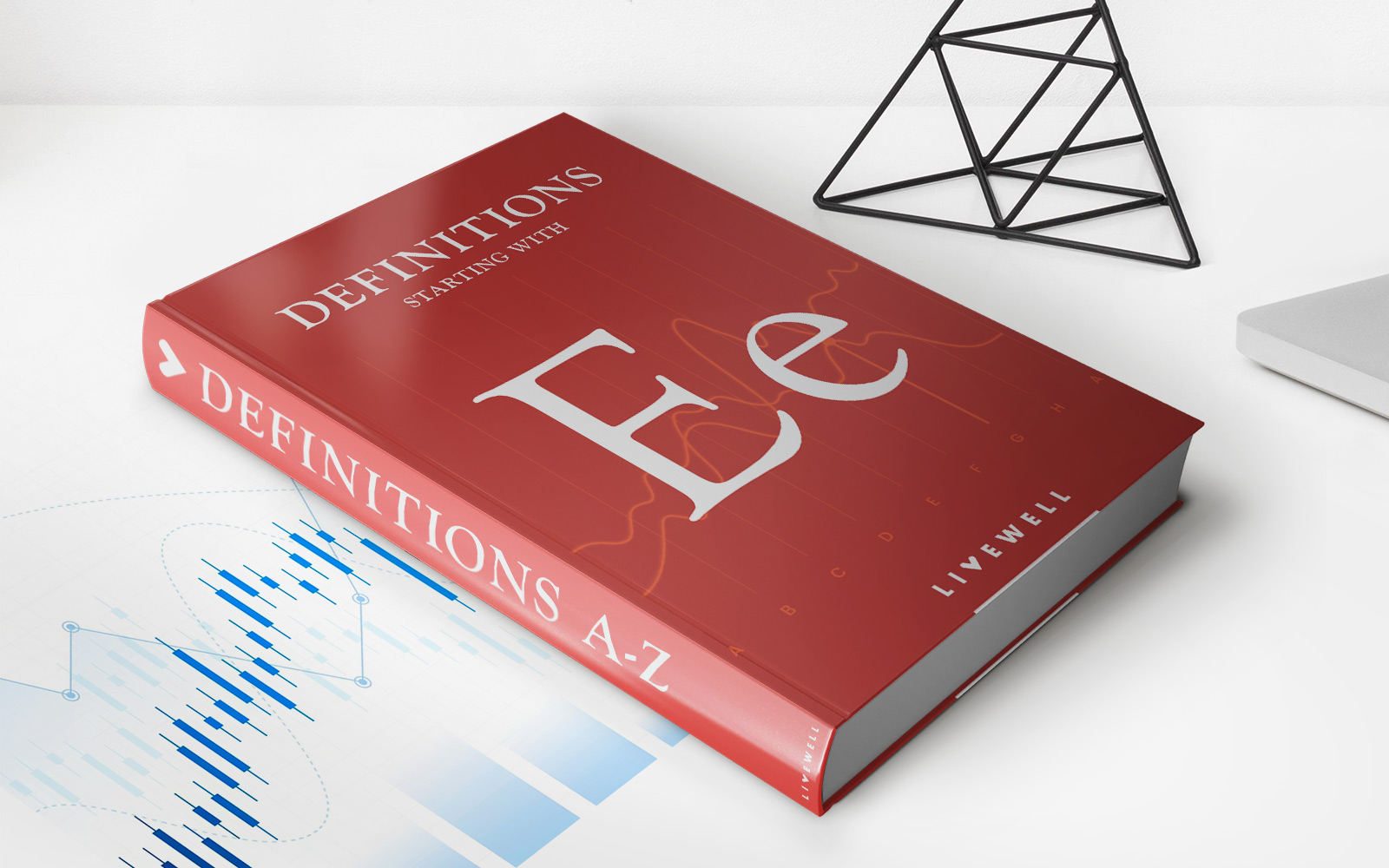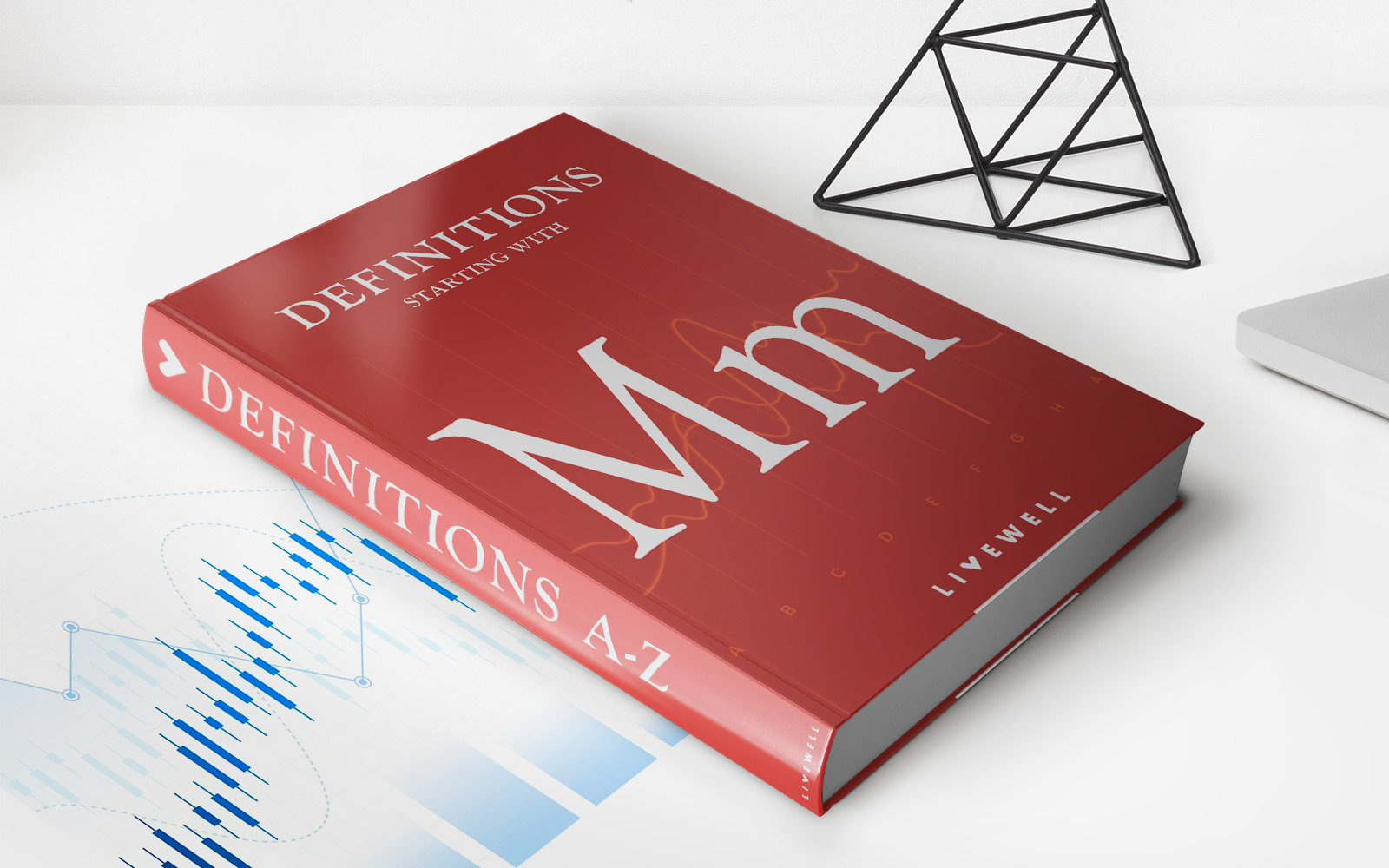

Finance
What Is Vested Balance In 401K
Published: October 17, 2023
Learn about the concept of vested balance in 401K plans and its significance in personal finance. Understand how it impacts your retirement savings and financial goals.
(Many of the links in this article redirect to a specific reviewed product. Your purchase of these products through affiliate links helps to generate commission for LiveWell, at no extra cost. Learn more)
Table of Contents
Introduction
When it comes to retirement planning, one of the most popular investment options is a 401K. This employer-sponsored retirement account allows employees to contribute a portion of their salary on a pre-tax basis, helping them save for their golden years. While contributing to a 401K is essential, understanding how it works and the different aspects of it is equally important. One such aspect is the concept of a “vested balance.”
A vested balance refers to the portion of your retirement savings that you have a legal right to, even if you were to leave your current employer. It is the money that is fully owned by you and cannot be taken away. To better comprehend the significance of a vested balance in a 401K, it’s crucial to delve into its meaning and implications.
In this article, we will explore what a vested balance is, how it is calculated, and why it matters for your retirement savings. We will also provide strategies to maximize your vested balance and highlight the benefits of having a high vested balance in your 401K account.
Understanding 401K
Before diving into the intricacies of a vested balance, it’s necessary to have a solid understanding of what a 401K is. A 401K is a retirement savings plan sponsored by an employer, which allows employees to contribute a portion of their salary on a pre-tax basis. The contributions made to a 401K account grow tax-deferred until withdrawals are made during retirement.
One of the main advantages of a 401K is that employers often offer a matching contribution. This means that for every dollar you contribute to your 401K, your employer will also contribute a certain percentage, up to a certain limit. This matching contribution can significantly boost your retirement savings over time.
Additionally, contributions to a 401K are deducted from your taxable income, which can potentially lower your tax liability. This tax advantage, combined with the power of compounding over the years, makes a 401K an attractive option for long-term retirement planning.
However, it’s important to note that there are contribution limits imposed by the Internal Revenue Service (IRS). For 2021, the maximum contribution limit for employees under the age of 50 is $19,500. If you are 50 or older, you are eligible for catch-up contributions, allowing you to contribute an additional $6,500, bringing the total contribution limit to $26,000. It’s wise to maximize your contributions to take full advantage of the tax benefits and potential employer matches.
To ensure a comfortable retirement, it’s crucial to have a clear understanding of how your 401K works and the various factors that can impact your savings. This includes understanding the concept of a vested balance, which we will explore in the following section.
What Is Vested Balance?
A vested balance in a 401K refers to the portion of your retirement savings that you have ownership of, regardless of your employment status. When you contribute to your 401K account, you may not immediately have full rights to the entire amount. The vesting schedule determines how much of the employer’s contributions and associated earnings you are entitled to over time.
Vesting schedules vary depending on the specific plan, but they typically follow one of two structures: cliff vesting or graded vesting. In cliff vesting, employees become fully vested in their employer’s contributions after a certain number of years. For example, if your company has a three-year cliff vesting period, you would not be entitled to any of the employer’s contributions until you have completed three years of service. Once the cliff is met, you become fully vested in the employer’s contributions.
On the other hand, graded vesting allows employees to gradually accumulate ownership rights over a period of time. This means that you become partially vested in the employer’s contributions and associated earnings at specific intervals. For instance, if your company has a seven-year graded vesting period with a 20% vesting increment, you would be entitled to 20% of the employer’s contributions after each year of service, and after seven years, you would be fully vested.
It’s important to note that employees are always fully vested in their own contributions and the associated earnings. So, regardless of the vesting schedule, you always have 100% ownership of the money you contribute to your 401K.
The vested balance in your 401K is significant because it determines the portion of your retirement savings that you can take with you if you were to leave your job before reaching retirement age. It provides you with a sense of security and control over your financial future, regardless of your employment situation.
Now that we have a clear understanding of what a vested balance is, let’s explore why it is important for your retirement savings.
Importance of Vested Balance in 401K
The vested balance in your 401K plays a crucial role in determining the true value of your retirement savings. It signifies the portion of your account that you can take with you if you were to change jobs or retire before reaching the plan’s specified retirement age. Understanding the importance of a vested balance can help you make informed decisions about your financial future. Here are a few reasons why the vested balance in your 401K is significant:
1. Retirement Security:
A substantial vested balance provides a sense of security for your retirement. It represents the funds you can rely on to support your lifestyle and cover your expenses when you are no longer working. By accumulating a higher vested balance, you increase your financial stability during your retirement years.
2. Mobility and Flexibility:
A significant vested balance allows you to have more flexibility in your career choices. If you want to change jobs or pursue a different career path, having a sizable vested balance allows you to leave your current employer without sacrificing your hard-earned retirement savings. It grants you the freedom to explore new opportunities and take control of your professional growth.
3. Retirement Income:
The vested balance in your 401K determines the amount of money you can withdraw or roll over into an Individual Retirement Account (IRA) when you reach retirement age. It serves as a source of income during your golden years, helping you maintain your desired lifestyle and cover expenses such as housing, healthcare, and leisure activities.
4. Estate Planning:
Your vested balance is an essential part of your overall estate. It can be passed on to your beneficiaries in the event of your passing. By ensuring a high vested balance, you can leave a greater financial legacy for your loved ones, potentially easing their financial burden and providing for their future needs.
5. Early Retirement:
If early retirement is one of your goals, having a sizable vested balance can make that dream a reality. With a higher vested balance, you can potentially retire before the plan’s specified retirement age and enjoy the fruits of your labor sooner. It gives you the flexibility to pursue your passions, spend time with loved ones, or embark on new adventures.
Understanding the importance of a vested balance in your 401K can motivate you to prioritize your retirement savings and make wise financial decisions. Now, let’s delve into how the vested balance is calculated.
How Vested Balance is Calculated
The calculation of a vested balance in a 401K can be complex and varies depending on the rules and vesting schedule set by the employer. The vesting schedule determines the percentage of the employer’s contributions that you are entitled to based on your length of service. Here’s a general overview of how vested balance is calculated:
1. Understand the Vesting Schedule:
Review the details of your employer’s specific vesting schedule. This will outline the timeframe and milestones for vesting in the employer’s contributions. It is essential to know whether your plan follows a cliff vesting or graded vesting structure and the specific intervals or years required for vesting.
2. Determine Your Length of Service:
Calculate the number of years you have been employed with the company. This includes both full-time and part-time service. Keep in mind that some plans may require a minimum number of hours worked in a year to be eligible for vesting.
3. Calculate the Vested Percentage:
Using the vesting schedule as a guide, determine the vested percentage for each year of service. For example, if your vesting schedule has a five-year graded vesting period with 20% vesting increment per year, you would vest in 20% of the employer’s contributions for each year of service.
4. Apply the Vested Percentage:
Apply the vested percentage to the employer’s contributions and associated earnings. This calculation will give you the amount that is considered vested and owned by you.
5. Keep Track of Vesting Schedule Milestones:
Regularly review your progress toward achieving full vesting in the employer’s contributions. Pay attention to any significant milestones where vesting percentages increase. This will help you stay informed about the growth of your vested balance over time.
It’s important to note that the calculation of vested balance only applies to the employer’s contributions and associated earnings. Your personal contributions are always 100% vested and remain fully owned by you.
Understanding how your vested balance is calculated allows you to track your progress toward full ownership of your retirement savings. Next, let’s explore the factors that can affect your vested balance.
Factors Affecting Vested Balance
Several factors can affect the vested balance in your 401K, influencing the speed at which you become fully vested in your employer’s contributions. It’s important to be aware of these factors as they can significantly impact your retirement savings. Here are some key factors that can affect your vested balance:
1. Vesting Schedule:
The vesting schedule set by your employer is the primary factor that determines the rate at which you become vested in the employer’s contributions. Whether it follows a cliff vesting or graded vesting structure, with specific timeframes and vesting increments, will directly affect the growth of your vested balance over time.
2. Length of Service:
The length of time you have worked for your employer plays a crucial role in vesting your employer’s contributions. The longer you stay with the company, the closer you get to becoming fully vested. Make sure to consult your plan’s vesting schedule to track your progress and understand the milestones at which vesting percentages increase.
3. Employer Matching Contributions:
If your employer offers matching contributions, the timing and amount of their contributions can have an impact on your vested balance. Depending on the vesting schedule, you may need to meet certain criteria, such as completing a certain number of years of service, to become eligible for full vesting in the employer’s matching contributions.
4. Job Change:
If you change jobs before becoming fully vested in your 401K, the vested balance will be affected. The new employer’s retirement plan may have a different vesting schedule, and you may need to start accumulating vesting credit from scratch. It’s essential to understand the implications of job changes on your vested balance and factor that into your decision-making process.
5. Plan Regulations:
The regulations and rules governing your specific 401K plan can have an impact on your vested balance. It’s essential to review your plan documents and be aware of any additional provisions or limitations that may affect the vesting of your employer’s contributions.
By understanding these factors and staying informed about your plan’s vesting schedule, you can actively monitor and make strategic decisions to maximize your vested balance. Now, let’s explore the benefits of having a high vested balance in your 401K.
Benefits of a High Vested Balance
Having a high vested balance in your 401K account can offer numerous advantages and enhance your financial security and peace of mind in retirement. Here are some key benefits of having a substantial vested balance:
1. Increased Retirement Income:
A high vested balance provides you with a larger pool of funds for retirement. This means you can potentially withdraw or receive a higher retirement income, allowing you to maintain your desired lifestyle and cover your expenses during your golden years.
2. Flexibility and Options:
With a significant vested balance, you gain more flexibility and options for your retirement. You have the freedom to choose when you want to retire, how you want to use your funds, and what retirement goals you can pursue. This flexibility can help you enjoy the retirement you’ve always dreamed of.
3. Financial Security:
A high vested balance provides you with a sense of financial security in retirement. It offers a safety net for unexpected expenses, healthcare costs, or other unforeseen circumstances that may arise. Knowing that you have a substantial vested balance can alleviate financial stress and provide peace of mind.
4. Legacy Planning:
If leaving a financial legacy for your loved ones is important to you, a high vested balance allows you to do so. You can designate beneficiaries who will receive the remaining balance in your 401K after your passing, providing for their financial future and possibly easing their financial burden.
5. Early Retirement:
A high vested balance can make early retirement more attainable. With a substantial amount saved, you may have the financial means to retire before the traditional retirement age. This freedom gives you the opportunity to pursue other interests, spend more time with family, or embark on new adventures while still enjoying a comfortable lifestyle.
6. Financial Independence:
Having a high vested balance in your 401K grants you financial independence. It allows you to rely less on other sources of income during retirement, such as Social Security or pensions, and gives you greater control over your financial future.
Overall, a high vested balance in your 401K offers a range of benefits that can significantly enhance your retirement experience, provide security, and give you the freedom to enjoy your golden years on your own terms.
Now, let’s explore some strategies to help you maximize your vested balance in your 401K.
Strategies to Maximize Vested Balance
Maximizing your vested balance in your 401K requires proactive planning and strategic decision-making. Here are some effective strategies to help you make the most of your retirement savings:
1. Start Contributing Early:
One of the most vital strategies is to start contributing to your 401K as early as possible. The power of compounding allows your savings to grow over time, increasing your vested balance. The sooner you start contributing, the more time your money has to potentially earn returns.
2. Take Full Advantage of Employer Matching:
If your employer offers a matching contribution, make sure to contribute enough to maximize their match. This essentially gives you free money and significantly boosts your vested balance. Take full advantage of this benefit to accelerate the growth of your retirement savings.
3. Contribute the Maximum Amount:
While there are contribution limits imposed by the IRS, strive to contribute the maximum allowed amount to your 401K. By doing so, you can maximize your retirement savings potential and increase your vested balance over time. Regularly review the contribution limits and adjust your contributions accordingly.
4. Stay Informed about Vesting Schedule:
Be aware of the vesting schedule set by your employer and stay informed about your progress toward full vesting. Understanding how the vesting percentages change over time can help you make informed decisions about your career and retirement planning.
5. Avoid Job Hopping:
Frequent job changes can impact your vested balance. Try to minimize job hopping, especially if you have not yet fully vested in your employer’s contributions. Changing jobs resets the vesting clock, and you may need to start accumulating vesting credit from scratch in a new company’s retirement plan.
6. Evaluate Investment Options:
Regularly review your investment options within your 401K plan. Diversify your portfolio and consider a mix of investments based on your risk tolerance and retirement goals. A well-balanced and diversified investment strategy can optimize returns and contribute to a higher vested balance.
7. Seek Professional Guidance:
Consider consulting with a financial advisor who can provide personalized advice and guidance tailored to your financial situation. They can help you develop a retirement plan, optimize your contributions, and make informed investment decisions to maximize your vested balance.
By implementing these strategies, you can take proactive steps towards maximizing your vested balance in your 401K. This will help ensure a more secure and comfortable retirement. Now, let’s conclude our discussion.
Conclusion
A vested balance is a critical component of your 401K retirement savings. It represents the portion of your account that you have ownership of, regardless of your employment status. Understanding the importance of a vested balance and how it is calculated empowers you to make informed decisions about your financial future.
Having a high vested balance in your 401K offers numerous benefits. It provides increased retirement income, flexibility, and financial security during your golden years. A substantial vested balance also allows for legacy planning and the possibility of early retirement, giving you the freedom to enjoy life on your own terms.
To maximize your vested balance, start contributing early, take full advantage of employer matching, contribute the maximum amount allowed, and stay informed about your vesting schedule. Avoid frequent job changes and evaluate your investment options wisely. Seeking professional guidance can also help you create a tailored retirement plan.
Remember, your 401K is a powerful tool in building a secure financial future. By maximizing your vested balance, you are taking proactive steps towards achieving financial independence and enjoying a comfortable retirement lifestyle.
As you navigate through your retirement planning journey, always stay informed, adapt to changing circumstances, and make strategic decisions to strengthen your financial well-being. Your vested balance is a reflection of your commitment to long-term savings and a reward for your dedication to securing your financial future.
Start taking control of your retirement savings today and watch your vested balance grow, ensuring a prosperous and fulfilling retirement down the road.














